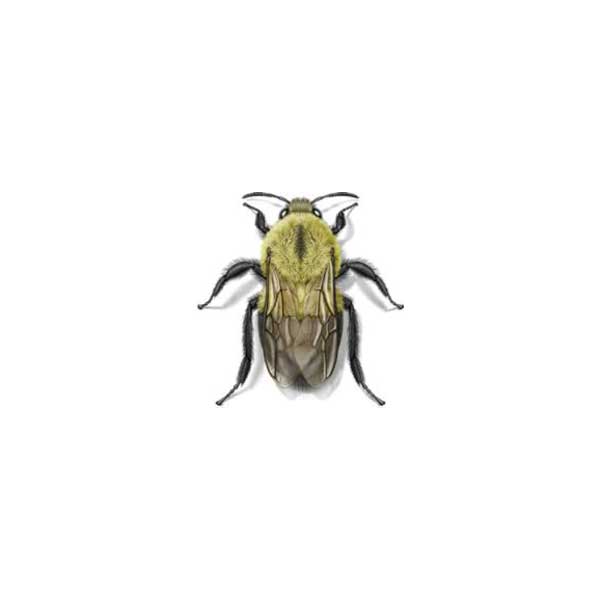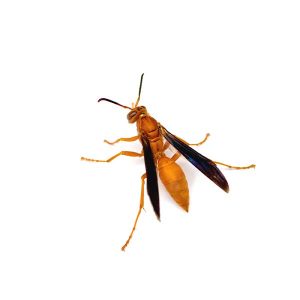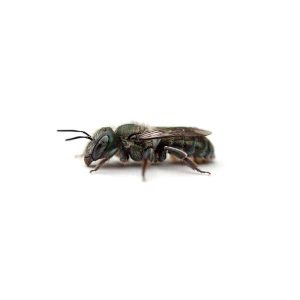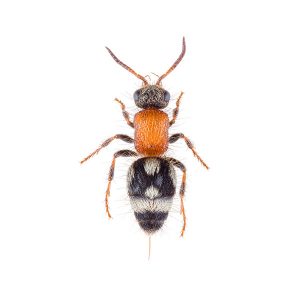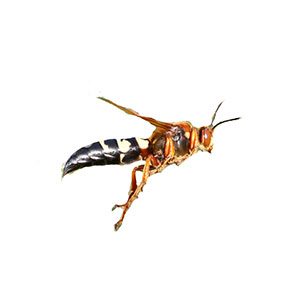Characteristics
Bumblebees are large and robust insects covered with densely branched setae (hairs). They have short, stubby wings and are beneficial as pollinators for many kinds of crops and ornamentals. Their wings beat 130 times or more per second, according to the National Wildlife Federation, and the beating, combined with their large bodies, vibrates flowers until they release pollen, called buzz pollination. Buzz pollination helps plants produce more fruit.
Identification
Bumblebees are easy to spot with their large, round bodies, black-and-yellow stripes, and fuzzy appearance. Ranging from ¾” to 1 inch in size, they have small wings for their robust bodies and are known for their distinctive buzzing as they forage among flowers.
Habitat
Bumblebee colonies are on the smaller side, containing just a dozen to a few hundred workers. Most bumblebees nest in the ground, using deserted rodent burrows and shallow cavities excavated beneath patio stones, landscaping timber, piles of compost, and within dense patches of grass. Above ground, they will occupy abandoned bird nests and fiberglass-insulated structural voids associated with outside walls, patio roofing, and decks.
Bumblebees in America
North America is home to over 40 species of bumblebees, each with distinct characteristics and behaviors. Among the most common are the American Bumblebee (Bombus pensylvanicus), the Common Eastern Bumblebee (Bombus impatiens), and the Yellow-Faced Bumblebee (Bombus vosnesenskii). While their nesting habits and behaviors vary, all bumblebee species play a vital role as important pollinators. By collecting nectar and pollen from flowers, they sustain their colonies and contribute significantly to environmental health and food production.
Bumblebee Behaviors, Threats, or Dangers
Bumblebees are peaceful insects and only sting when provoked. Most stings happen when their nest is disturbed. Only female bumblebees sting, and unlike honey bees, they can sting more than once. Bumblebees can sting multiple times, but they do not form swarms like honeybees. The pain from a bumblebee sting is less painful than a honey bee sting. However, a sting can be dangerous if it occurs on the head or neck or if an individual is allergic to their venom.
Because bumblebees will sting when threatened, homeowners are advised to seek out local bee pest control experts rather than try to address the infestation themselves.
Need Help with Bumblebee Control?
If bumblebees nest too close for comfort, identify the nest and contact our professional bee control experts. Our technicians can safely remove nests and provide long-term solutions for your home. Whether you’re facing a bumblebee infestation or simply want to learn how to identify whether you are dealing with bumblebees or another type of stinging insect, we’re here to help. Contact us today for reliable pest control services.
Are Bumblebees Hard to Get Rid of?
Yes, bumblebees can be challenging to eliminate without professional help. Their nests are often hidden in hard-to-reach places, and disturbing a nest can result in aggressive behavior. For effective and safe bumblebee control, it’s best to consult pest control experts who understand how to get rid of bumblebees without harming the environment.
How Many Bumblebees Count as an Infestation?
A single bumblebee nest or colony may contain 50 to 400 bees. If you notice an increased number of active bumblebees around your home or garden, it’s essential to identify the nest and address the issue promptly.
Need help with pest control?
Ready for your FREE quote?
Fill out the form below and we’ll be in touch!
*During normal business hours. After hours inquiries will be returned the next business day.
FAQs:
Do Bumblebees Bite or Sting?
Bumblebees do not bite, but they can sting. Unlike honeybees, they can sting multiple times.
What is so Special about Bumblebees?
Bumblebees are important pollinators, crucial for the growth of crops and wildflowers and for maintaining biodiversity. Their unique ability to buzz pollinate helps them release pollen from flowers that other pollinators cannot access.
How Many Bumblebees Are in a Colony?
Most bumblebee colonies range from 50 to 400 bees.
Are Bumblebees Friendly?
Yes, bumblebees are generally non-aggressive and unlikely to sting unless provoked. They are focused on foraging for nectar and pollen rather than defending their nest.
What Purpose Do Bumblebees Serve?
Bumblebees are vital to agriculture and ecosystems as important pollinators. They ensure plants reproduce, contributing to food production and maintaining biodiversity.
Is It Good to Have Bumblebees in Your Yard?
Yes! Bumblebees benefit gardens by pollinating flowers, fruits, and vegetables. However, if a nest is too close to your home, professional bumblebee control extermination may be necessary to ensure safety.
What Is the Lifespan of a Bumblebee?
The lifespan of a bumblebee varies by role:
- Worker bees: 2-6 weeks.
- Drones: 2-3 weeks.
- Queens: Up to one year, depending on the species.

